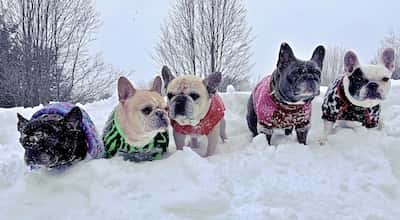
Are you thinking about adding a new dog to your family? That’s a question that I am wrestling with right now. After the loss of Baxter a few weeks ago, it’s clear that my remaining dog Pippa prefers a companion. She loves to play and a dog friend is her favorite playmate.
We have a group of dogs that she loves to play with. They run and chase each other and all of them get along great. But what about a dog that will be in our house all the time? Introducing them correctly is so important. If you get off on the wrong foot, it is really hard to change attitudes. So what do you do?
Whenever I’ve added a new dog to our home or even to a play group, using these steps has always worked.
- The introduction. First impressions do matter. If one dog is protecting turf, it can make for a rough beginning. So always introduce dogs on neutral territory. Never your home or the new dog’s home. A fenced in area like a dog park is good. That ways they can meet on their own terms, nothing forced.
- Take them on a walk together. Two people and two dogs. In the beginning, keep them on opposite sides of the humans. Let them see each other and work off energy walking. As you walk, if all is going well, let them start to smell things together but no contact. If there is any negative reaction, keep walking. Once the dogs are used to seeing each other and have worked off a lot of energy, time to introduce the new dog to its new home.
- Entering the home is also important. Humans first, old dog next, new dog last.
- Once the new dog is in the home, keep both on a short leash and observe behavior. A leash will allow you to separate if needed. Keep your energy calm. Dogs can feel your anxiety, so be calm and confident.
- As they settle in, do not tempt fate with anything high value. Do not give them bones to chew on or new toys. Keep the old dogs toys out of reach. Let the dogs get very familiar with each other before you try to introduce any new toy or treat.
 Pippa and Baxter could have treats together but I always had to supervise the introduction of cow hooves for chewing. Pippa assumes all chews are hers. So tussles could arise if I wasn’t careful.
Pippa and Baxter could have treats together but I always had to supervise the introduction of cow hooves for chewing. Pippa assumes all chews are hers. So tussles could arise if I wasn’t careful.
- I am a big fan of the earn everything form of dog training. I always make my dogs sit and watch me until released before they get a treat. It’s how I have always trained puppies to be good citizens and it can be introduced at any age. There are a number of trainers who have information on this form of training. This trainer just one that has a good explanation of how the system works. (click here for info) There are many others.
- I am also a fan of not feeding the dogs together in the beginning. Once you have a good understanding of how their dynamic might work, feeding in the same room is always an option. But in the beginning, I always start off feeding in different rooms so there is no confusion for them which bowl is there bowl.
- If you find that the dogs are not getting along, start from the beginning. Use crates to keep them separated, dog fights can become out of control quickly. Walk them frequently and keep their energy level under control. A tired dog is much easier to teach than a dog with lots of energy. And if you find the dogs are fighting, please consult a trainer. Keep yourself and the dogs safe until you work out issues.
- Do not leave dogs alone together until you are absolutely sure they are accepting each other. Most dogs like their crate, it’s a safe den for them. Use them to your advantage.
Adjustment times can vary greatly with dogs. Some accept each other almost immediately, others require some time. Pay attention to your dogs and what they are telling you and you can make it a much easier transition.
So…. off we go. I’ve been looking at rescue sites and have my fingers crossed that soon, we’ll be introducing a new dog into our family. I’ll keep you posted.






